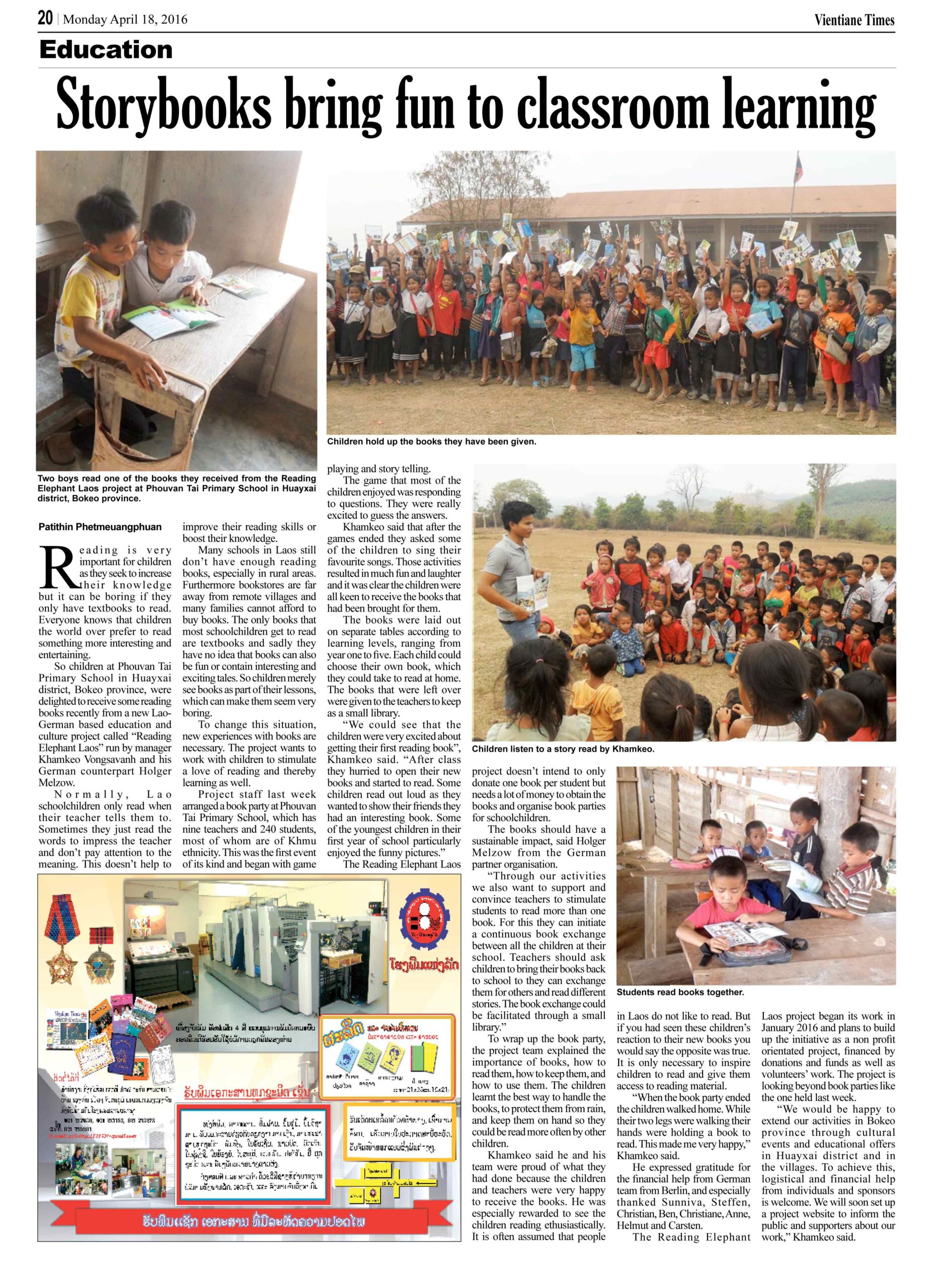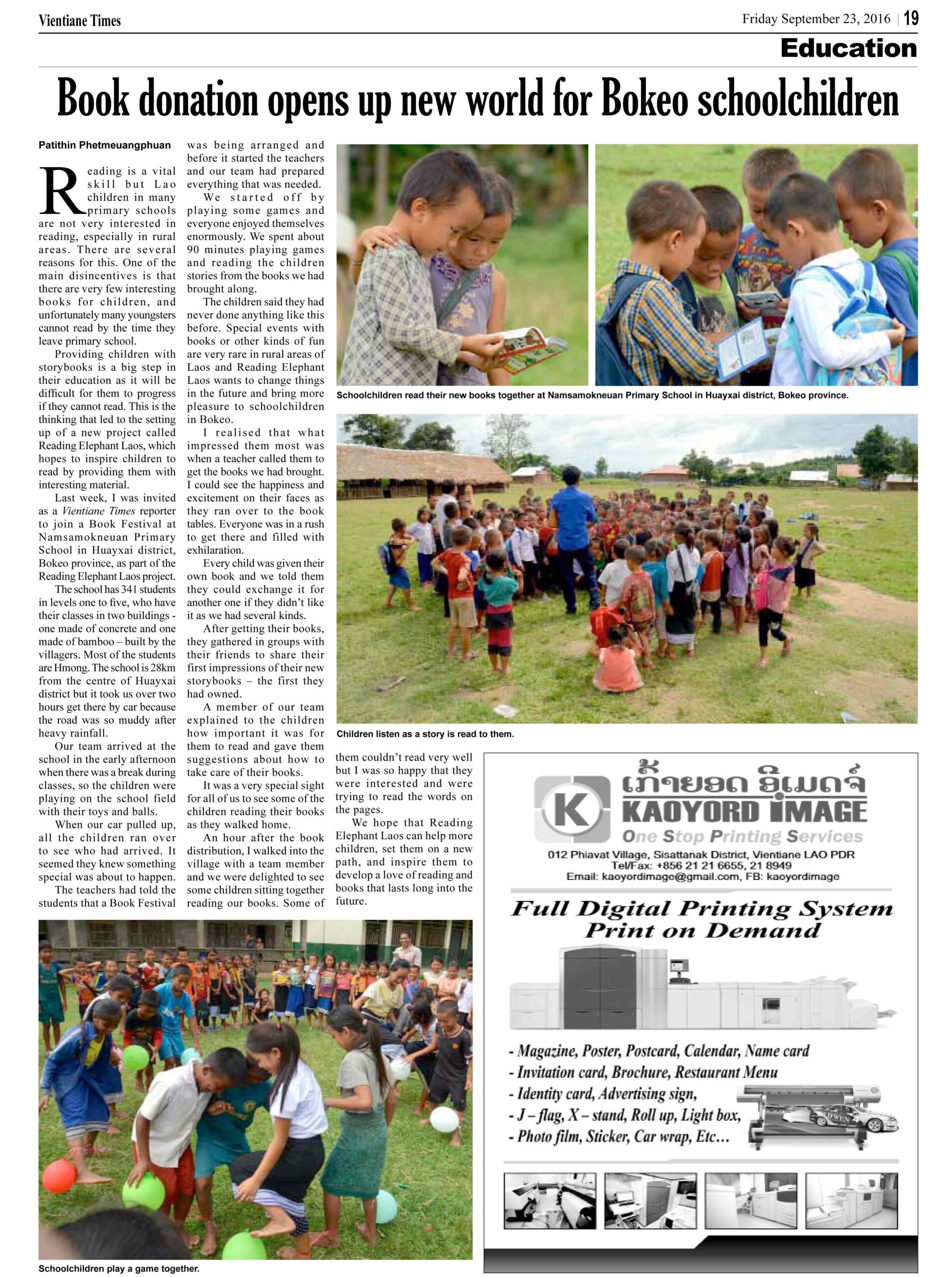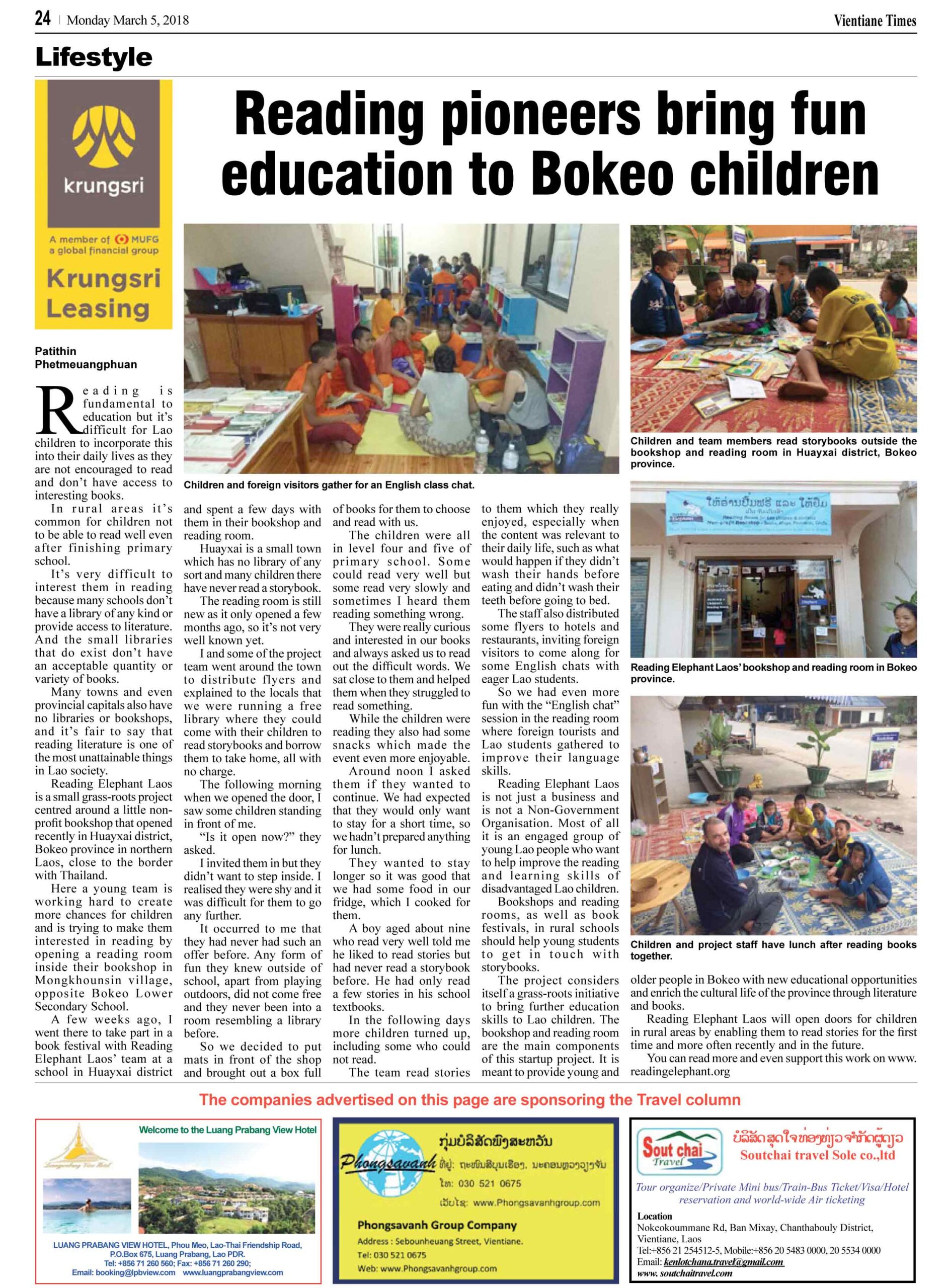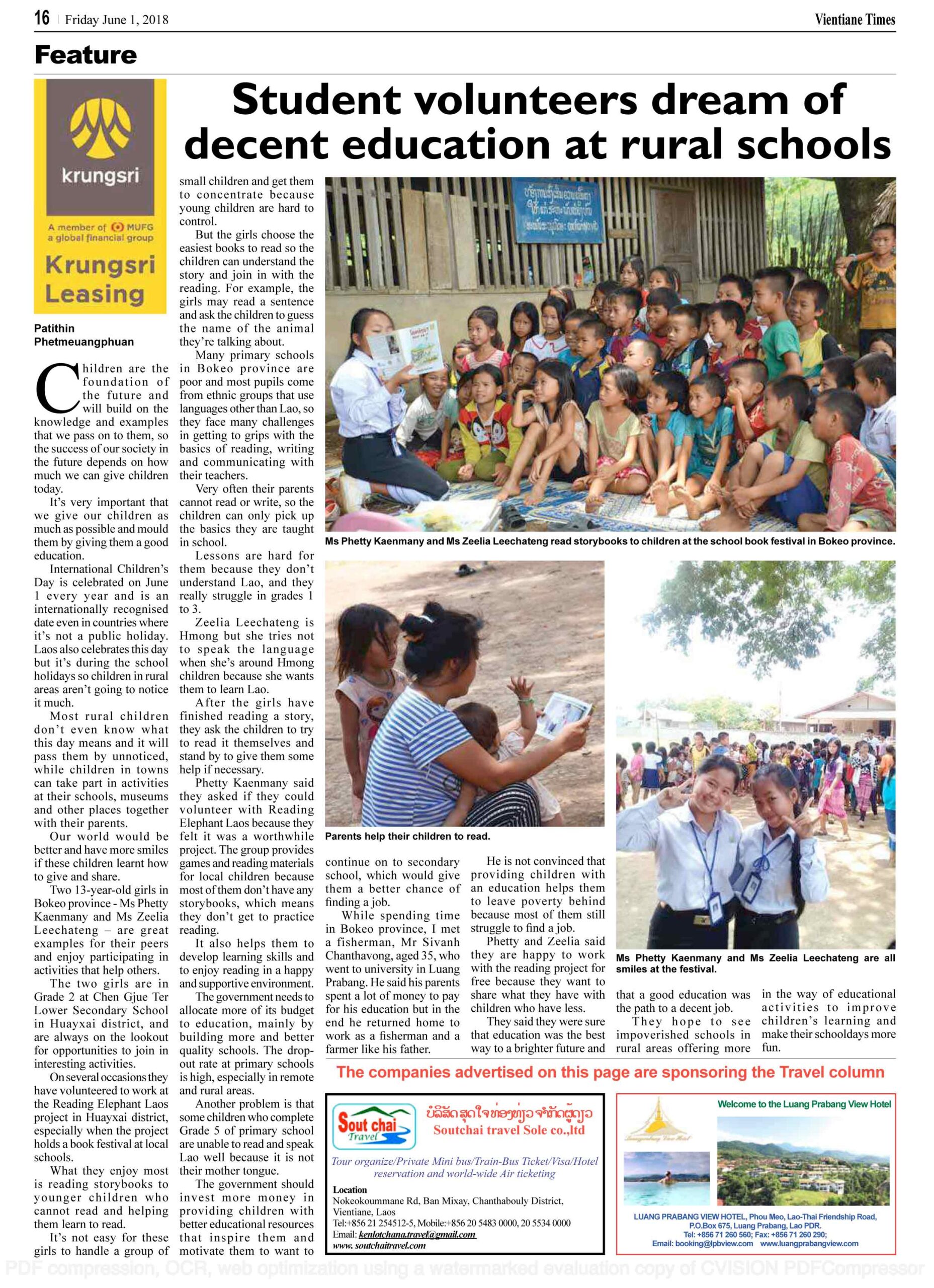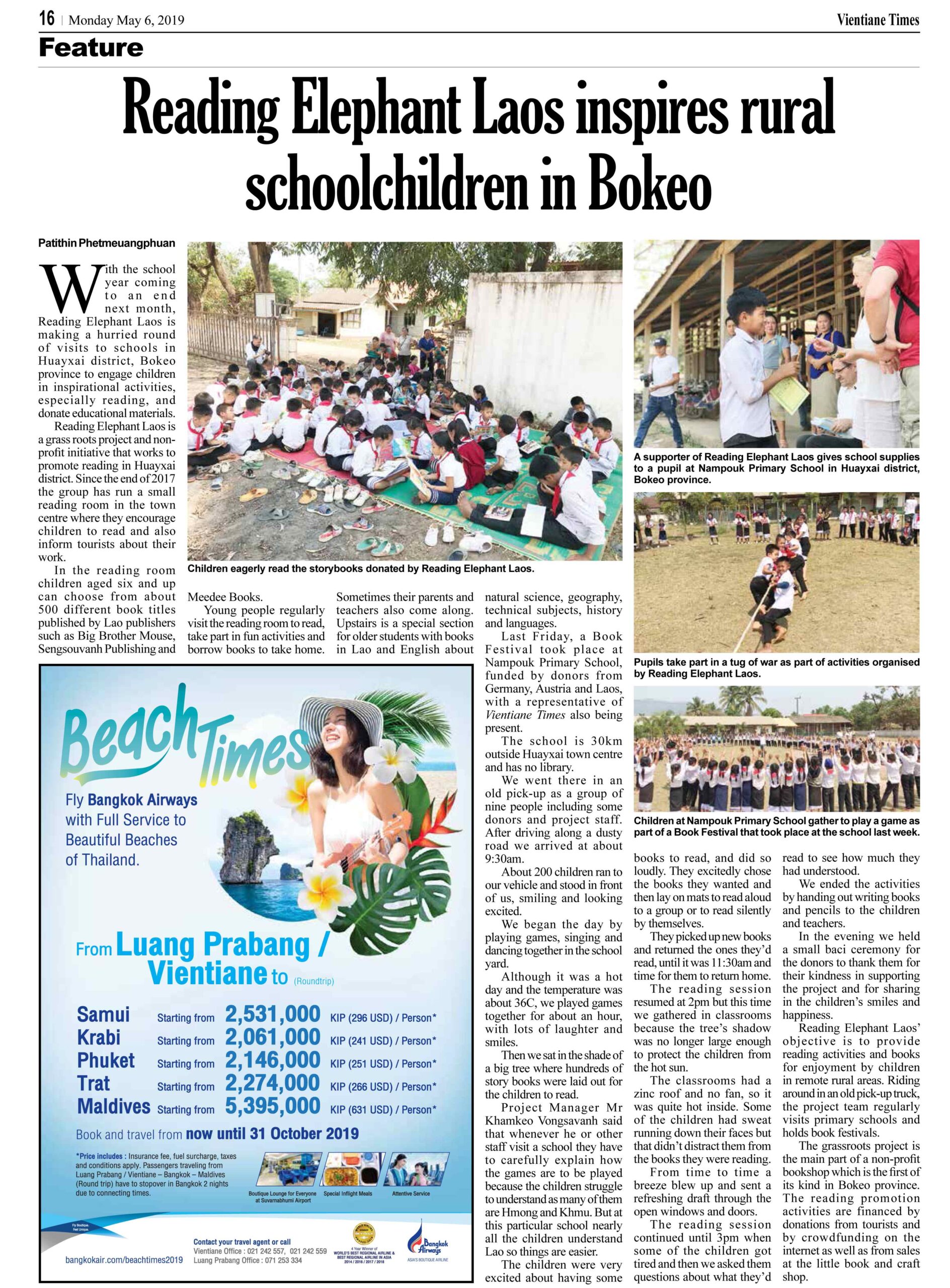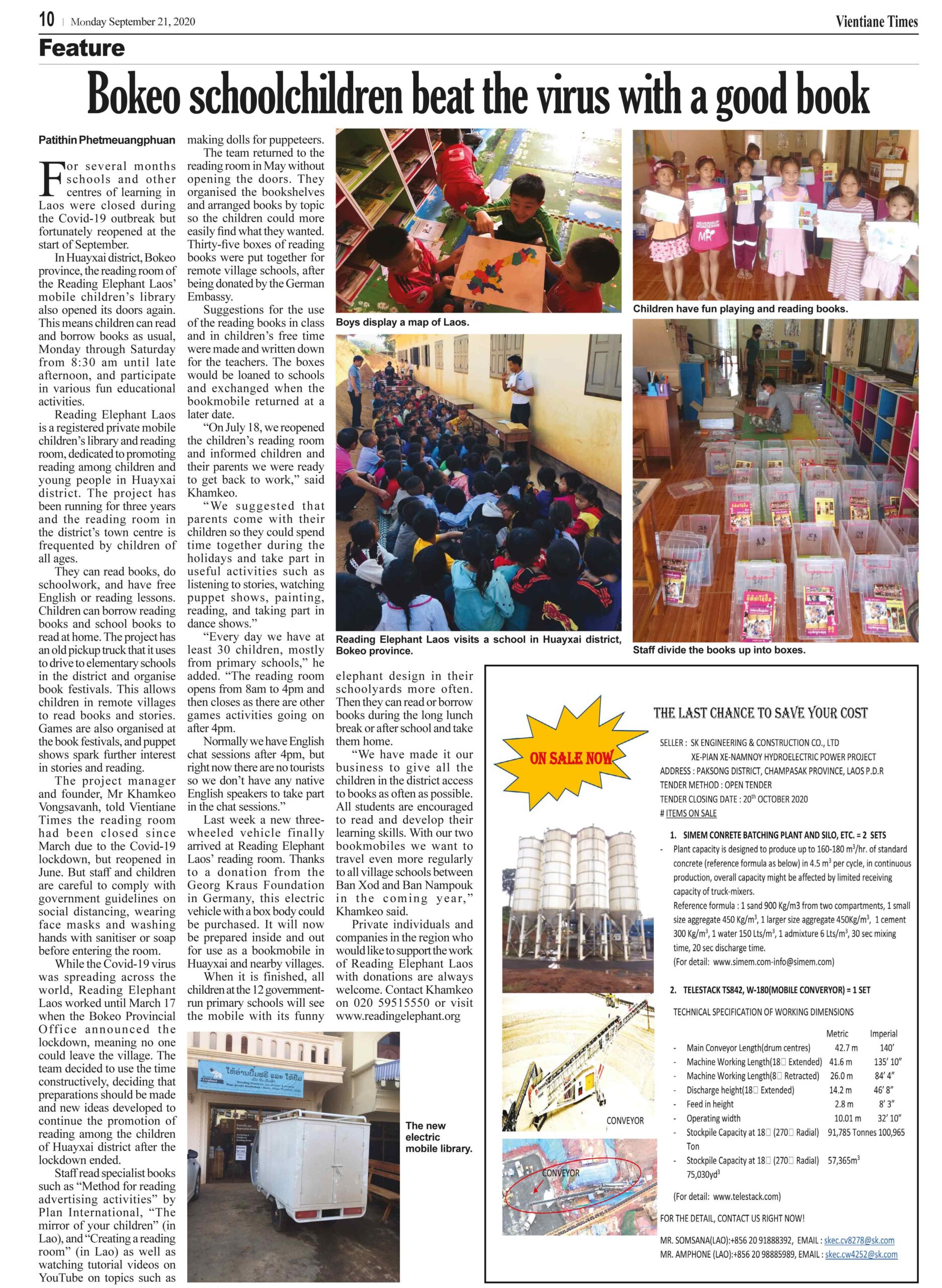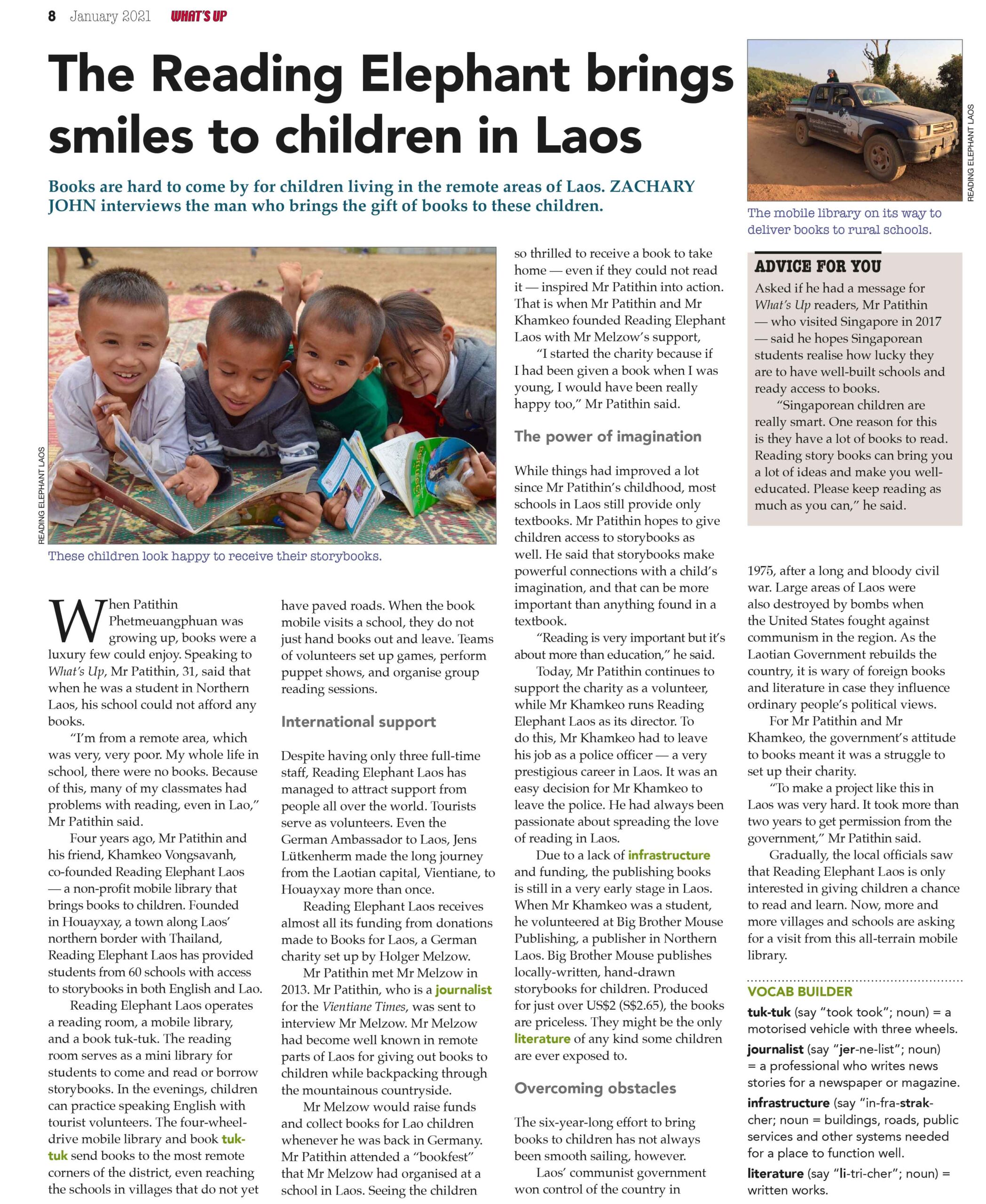„Wörter und Literatur sind nämlich wie Ameisen oder Wasser: Sie dringen überallhin, auch noch in die kleinsten Ritzen und Schlupflöcher.“
Pressestimmen
Seit 2016 sind in der VIENTIANE TIMES – der einzigen laotischen Tageszeitung in englischer Sprache – mehrere Feature-Artikel zur Arbeit von Reading Elephant Laos erschienen. – Ein weiterer Artikel erschien im Januar 2021 im Jugendmagazin WHAT’S UP in Singapur:
Fotodokumentationen
2018 hat die Stiftung Nord-Süd-Brücken in Berlin den Aufbau des Leseraumes der Kinderbibliothek von Reading Elephant Laos in Ban Houayxay finanziell gefördert. Einige Ergebnisse in Bildern aus dieser Projektphase findet Ihr in einer kleinen Fotodokumentation. Die Qualität der Bilder ist nicht immer professionell, dennoch helfen sie, einen weiteren Eindruck von der Arbeit des Teams vor Ort zu bekommen.
Bücherdownloads
Hier können einige Kinderbücher zur Ansicht oder auch zum Lesen (Laotisch oder Englisch) heruntergeladen werden. Die Urheberrechte liegen bei den Autoren bzw. beim Verlag Big Brother Mouse in Laos. Wir danken Big Brother Mouse aus Luang Prabang für die freundliche Unterstützung und für die Bereitstellung der Links bzw. Dateien.
- Growing Up On The Mountain
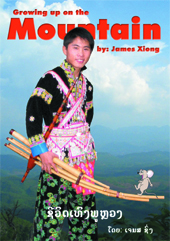
James was born in a Hmong village, high on a mountain in Laos. As a young child, he spent an hour every day carrying water up from the spring below the village. He also helped with farming, went to school, and built a tricycle for exciting rides down the hill.
As a teenager, he moved to Luang Prabang so he could attend high school. He learned English, worked part-time, and in his spare time, he and his brother built a new house for their parents. We thought the story of his life so far (age 17) was both interesting and inspiring; you will, too.
- The Tale of Peter Rabbit
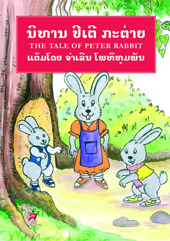
Poor Peter Rabbit! His father was already made into larp when he went munching in the wrong garden, and Peter is in danger of meeting the same fate. Will he learn his lesson in time? Chamlern has provided bright new pictures for this children‘s classic, and we‘ve adapted it with a few Lao twists, to entertain a new generation of readers whose parents never knew the story of Peter Rabbit.
- Yuli’s story
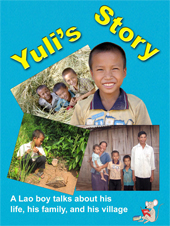
Would you like to know more about life in Laos? Barbara Meili and Gikong asked a boy in Laos to tell about his life. Here is his story, with many photographs. The text is in English, French, and German. Who is it for? This is different from other books listed here. We have not published it in Laos; it‘s for teachers, parents, and young people in other countries who would like to know more about life in another country.
- Phiiyamoi
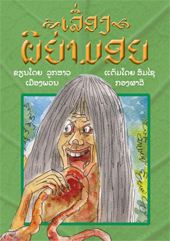
A poor fisherman discovers that someone else is catching his fish. It is the witch, Phiiyamoi. They fight, but he loses and has to marry her. His troubles, however, have only begun. This traditional Lao folktale may not become a favorite in western kindergartens anytime soon: By the end of the story, Phiiyamoi is snacking on another character‘s intestines. Here, it‘s all considered good fun, while also teaching the value of not being greedy.
- The Red-Headed Club
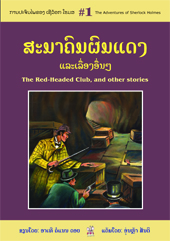
A shopkeeper mysteriously gets, then loses, a well-paying job – simply because he has red hair. Childlike drawings of dancing men seem like a foolish prank – until they turn deadly. These adventures of Sherlock Holmes have entertained readers around the world for over a century. Here in Laos, students learning English get their practice from English books that are dull and often ungrammatical. With Sherlock‘s help, we‘re going to solve that problem. We‘ve simplified the text of three Sherlock Holmes stories, for this first book in what will become a bilingual series about the famous detective.
- One Mouse and seven cats
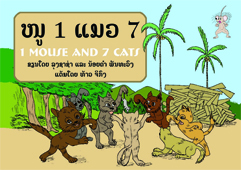
Sonesulilat has 8 crickets on the grill. He eats 3 of them; how many are left? If there are 3 nagas, and each naga has 7 heads, how many heads are there in all? And just what are those 7 cats going to do with 1 mouse? Easy number questions like these, each with a full-page picture, make it fun for children to learn basic arithmetic.
- Fly, Fly, Fly!
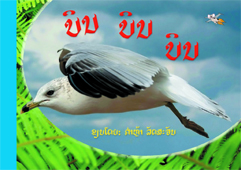
An eagle soars, a fish swims, a porpoise leaps, and two giraffes walk through the grassland. Seventeen animals each do their thing, introducing young children to the expressive potential of Lao vocabulary.
(English doesn‘t have a word that means „to move by humping up your back“; Lao does.) Eye-catching photographs, of both familiar and unfamiliar animals, add to the book‘s appeal. Older sisters and brothers who are learning English can read this with younger children, and both will expand their word skills.

